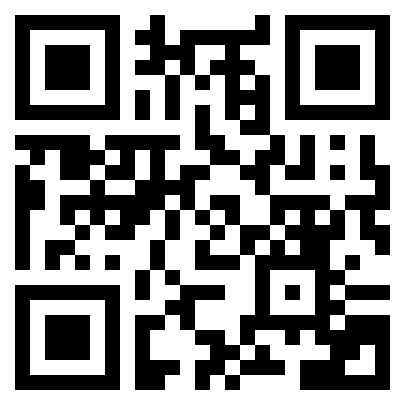MN305 LeakSure Innovation Assignment: Commercialising a Game-Changing Air Leak Detector via University & Corporate Collaboration
| University | Maynooth University (MU) |
| Subject | MN305 - Innovation Management: Tools and Concepts |
Background:
LeakSure are a small engineering company that specialise in high precision instruments that detect air leaks. Their customers are large multi-national industrial companies that operate factory machinery from which air must be excluded for quality control purposes. LeakSure’ air leak detectors are fitted in their customers’ factories and monitor for the air leaking into the customers’ machinery.
LeakSure employs 150 people. They are organised into conventional business departments for an engineering company: Sales & Marketing, Manufacture (of the detectors), Engineering support & after-sales service, Personnel and Finance. Their key customers are multi-national corporations in sectors including automative and Food manufacturing. They have produced air leak detectors for 20 years and have a good reputation for quality. They have four main competitors who are also SMEs.
The Innovation Scenario and Challenge
The Engineering Support team at LeakSure have developed a new technology for air leak detection. Preliminary tests on a prototype in the engineering lab at LeakSure indicate that the new technology demonstrates a radical improvement in leak detection performance. As an additional benefit, the materials used with the new instrument are from more sustainable sources than the current technology on the market. The Engineering Support team at LeakSure believe the new technology is a “game-changer” and represents a radical innovation in air leak detection.
However, LeakSure have no experience at commercialising a new technology. They have a creative idea (i.e. an invention in the form of a prototype that works in the engineering laboratory), but they have no experience with converting an invention into a new type of high precision product that can be used in factories around the world.
Task
The task for the MN305 individual assignment is to write a Management Briefing for the Board of LeakSure that compares the following two innovation management strategies for converting their technology invention into a saleable leak detector product:
- A collaboration with Maynooth Works that will allow LeakSure to access the research and design expertise of Maynooth University in order to scale-up the invention into a new type of air leak detector; but will leave LeakSure responsible for the Sales and Marketing of the new product.
- An open innovation partnership with one of LeakSure’ large corporate customers in which the large company provides the resources for the development of the new leak detector product in exchange for LeakSure granting the large corporate an exclusive license of the technology.
Are You Searching Answer of this Question? Request Ireland Writers to Write a plagiarism Free Copy for You.
For each of the two innovation management strategies, the briefing document should clarify and explain:
- The specific management responsibilities of LeakSure and the responsibilities of the innovation collaborator (i.e., Maynooth Works and the Open Innovation Corporate Partner).
- The intellectual property management implications for LeakSure in each scenario.
- The potential business benefits and risks of each strategy.
Objectives
The objective of the assignment is to demonstrate the ability of students to apply concepts, methods, and tools discussed during in the module MN305 – Innovation Management: Tools and Concepts to a business case. Additionally, students should show their ability to critically assess real-world companies’ innovation activities, building – among other knowledge – on their knowledge of sources of individual and organisational creativity as well as approaches to collaboration for innovation.
Structure
Students should structure their assignment based on the two strategies and the accompanying tasks described above. Section headings should clearly indicate which strategy or tasks is addressed. Students should be aware that some questions or tasks may be addressed with a relatively short answer while answering other questions may require longer elaborations.
Students should not include an abstract or an executive summary in their assignments. Introduction and concluding sections should be kept short and concise.
Students are reminded that the different sections of their management briefings need to be integrated and build upon one another. The management briefing should follow a logical structure and a comprehensive line of argumentation. It is very advisable that students check whether structure and content of the entire management briefing are consistent and follow a logical line of argumentation before submitting their management briefing.
Writing Style
Management briefings are frequently used to inform an audience – in this case the management of the SME LeakSure – about recent developments and to summarize actions that need to be taken. Management briefings are NOT academic essays! Typically, management briefings are written in a very concise and coherent way. References should only be included if very specific information is included in the briefing (see Section Referencing).
In addition, the writing style of management briefings is typically characterised by:
- Using professional but plain language.
- Avoiding the use of jargon or defining specific terms clearly if required.
- Maintaining objectivity.
- Active voice.
- Using headings to structure the briefing.
- Developing one idea per paragraph.
- Being very specific about challenges, explanations, actions, …
- Lists of bullet points, illustrations, and tables may be used where appropriate.
- Using bold, italic and all caps only where necessary.
Get Solution of this Assessment. Hire Experts to solve this assignment for you Before Deadline.
Word Count
The management briefing should be 1,500 words long (+/- 10%, including all figures, graphs, tables, appendices).
Information listed on the cover page, the reference list, and the plagiarism statement do not contribute to the word count.
Students are advised that the length of the assignment does not indicate that writing this management briefing is “easy” or “easier than in other modules because it is shorter”. The opposite seems to be true. In shorter assignments, student must choose their words very wisely to present their arguments in the required breadth and depth. In short assignments, every sentence must be meaningful and informative.
Submission
Each student must submit an electronic version (preferably as Word- or pdf-file) of her or his management briefing via Turnitin.
A plagiarism statement signed by the student must be included in the assignment (see template below).
Submission date for the individual assignment:
Electronic submissions via Turnitin are due by midday (12pm) on Thursday, 15th May 2025.
Turnitin submissions after this time will have a penalty of 10% per day or part-day.
Layout
Students can consider the audience for the management briefing, i.e., the management of the SME LeakSure, when choosing the layout style. General advice on the layout is given below.
Cover Page:
Students must include a cover page that clearly shows the title of the assignment, the module number (MN305) as well as their name and the student number. Information listed on the cover page does not contribute to the word count.
Project Title
Module: MN305
Author:
Steven Klepper (987654)
Page Set-up:
The paper size should be set to A4, portrait orientation. Margins should be set to 2.54cm all around.
Font:
Students should use Calibri 11-point font.
Alignment:
The main body of the text must be justified, i.e., text must have straight edges on both sides of the paragraph.
Paragraphs:
The paragraphs should be set to 1.15-line spacing. A 6pt spacing should be included after each paragraph.
Section Headings:
The management briefing should be structured with appropriate headings and sub-headings. All headings and sub-headings should be in bold, 14-point font, aligned at the left margin. Headings and sub-headings should be numbered consecutively.
Headers and Footers:
Student numbers should appear in the header (upper right) on all pages of the management briefing. All pages except the title page should be numbered.
Page Numbers:
Pages should be numbered consecutively. Page numbers should appear in the footer, aligned to the right.
Figures and Tables:
Figures and tables should be consecutively numbered with Arabic numerals. Each figure as well as each table should have a self-explanatory caption placed directly below the table or figure.
Footnotes:
Students may use footnotes to provide additional information but not for citation. Footnotes should be placed in each page (not at the end of the briefing). Footnotes should be numbered consecutively.
Stuck in Completing this Assignment and feeling stressed ? Take our Private Writing Services
Plagiarism Statement
I have read and understood Maynooth University’s policy on plagiarism. I declare that this management briefing is my own work and has not been submitted in any form for another degree or diploma at any university or other institution of tertiary education. Information derived from the published or unpublished work of others has been acknowledged in the text and a list of references is given. AI generated information has been clearly referenced in the text, even if the content has been modified.
Date: _________________________ Signature: _________________________
Prepare your report for Innovation Strategies at LeakSure with the help of AI-free assignment help in Ireland. There are specialized professionals for all categories of assignments who offer you plagiarism-free and superior content. You are assured that our report-writing service will make you productive and help you achieve high grades in your academic year. Contact us today and get your high-quality report!

